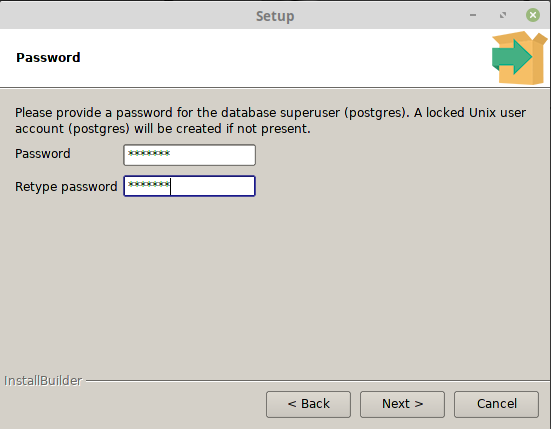
Advantages and disadvantages of an SQL dumpĤ.6.1.2. Backing up PostgreSQL data with an SQL dump"Ĥ.6.1.1. Backing up PostgreSQL data with an SQL dump"Ĭollapse section "4.6.1. Backing up PostgreSQL data with an SQL dumpĮxpand section "4.6.1. Backing up PostgreSQL data"Ĭollapse section "4.6. Configuring TLS encryption on a PostgreSQL serverĮxpand section "4.6. Connecting the replica server to the source serverĤ.5. Creating a replication user on the MySQL source serverģ.6.4. Migrating to a RHEL 9 version of MySQL 8.0Ĭollapse section "3.6. Performing logical backup with mysqldumpģ.5. Backing up MySQL data"Ĭollapse section "3.4. Adding a new node to MariaDB Galera ClusterĮxpand section "3.4. Components to build MariaDB Galera ClusterĢ.8.4. Introduction to MariaDB Galera ClusterĢ.8.2. Replicating MariaDB with Galera"Ĭollapse section "2.8. Migrating from a RHEL 8 version of MariaDB 10.3 to a RHEL 9 version of MariaDB 10.5Įxpand section "2.8. Notable differences between MariaDB 10.3 and MariaDB 10.5Ģ.7.2. Migrating to MariaDB 10.5"Ĭollapse section "2.7. Restoring data using the Mariabackup utilityĮxpand section "2.7. Performing physical online backup using the Mariabackup utilityĢ.6.3. Performing logical backup with mariadb-dumpĢ.6.2. Backing up MariaDB data"Ĭollapse section "2.6. Configuring the MariaDB client to use TLS encryption by defaultĮxpand section "2.6. Globally enabling TLS encryption in MariaDB clients"Ģ.5.1. Globally enabling TLS encryption in MariaDB clients"Ĭollapse section "2.5. Globally enabling TLS encryption in MariaDB clientsĮxpand section "2.5. Requiring TLS encrypted connections for specific user accountsĢ.5. Configuring TLS on a MariaDB serverĢ.4.3. Placing the CA certificate, server certificate, and private key on the MariaDB serverĢ.4.2. Setting up TLS encryption on a MariaDB server"Ģ.4.1. Setting up TLS encryption on a MariaDB server"Ĭollapse section "2.4. Setting up TLS encryption on a MariaDB serverĮxpand section "2.4. Go back to the Services window (if it was still open, refresh it) and Start the PostgreSQL service.Providing feedback on Red Hat documentationĢ.4.

So Right-click on the pg_db folder and under the Security Permissions add Network Services again, but this time it only needs Read & Execute as well as List folder contents permissions.


it needs to have read access to the parent directories above it.
#Postgresql install different directory full
Type “ Network Service” and then click “ Check Names”, make sure it has Modify and Full Control permissions and then click OK.Įqually important PostgreSQL needs to be able to “see” the data-directory (see my ServerFault.StackEx question), i.e. Under the Security Tab click “ Edit.” and then “ Add.”. Change permissions for the new data directoryįor the new data-dictionary folder: Right-click on it and click Properties. Modify the configuration to the following with the sc command You can see the current configuration for PostgreSQL by typing sc qc postgresql-圆4-9.5 1000 and hitting Enter.
#Postgresql install different directory windows
Start the cmd prompt as an administrator by hitting the Windows button and typing cmd then right-clicking “Run as Administrator” In any case, I didn’t have permission on the server I was using and it seems to be a Bad Idea(tm) see hereĭirect registry modification should be avoided (because you can’t be sure what else Windows is changing when it modifies the path to exe, f.e.) unless you are absolutely sure what you do The -D "C:\Program Files\PostgreSQL\9.5\data" flag is indicating that the data directory is C:\Program Files\PostgreSQL\9.5\data DO NOT EDIT THE REGISTRY "C:\Program Files\PostgreSQL\9.5\bin\pg_ctl.exe" runservice -N "postgresql-圆4-9.5" -D "C:\Program Files\PostgreSQL\9.5\data" -w If you Right Click to Properties on the PostgreSQL services in Services, you’ll notice that the startup command is Modify the command that starts PostgreSQL Ident_file = 'C:\Program Files\PostgreSQL\9.5\data\pg_nf' # ident configuration fileĤ. Hba_file = 'C:\Program Files\PostgreSQL\9.5\data\pg_hba.conf' # host-based authentication file # option or PGDATA environment variable, represented here as ConfigDir.ĭata_directory = 'E:\pg_db\data' # use data in another directory # The default values of these variables are driven from the -D command-line


 0 kommentar(er)
0 kommentar(er)
